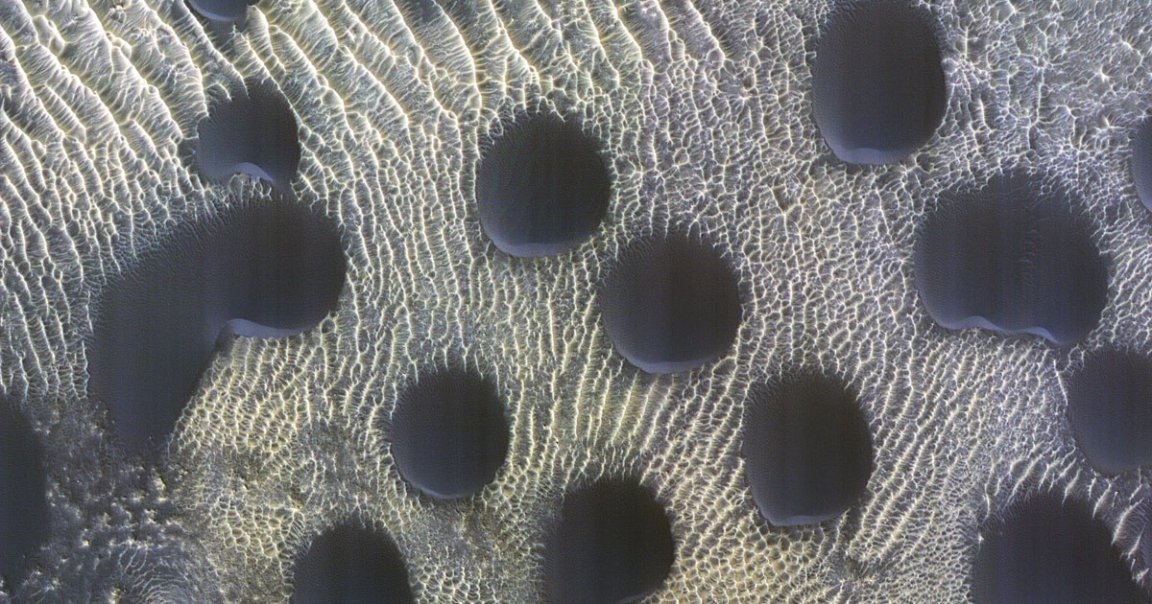
Mars Donuts
Mars is chock full of beautiful sand dunes that can come in some truly magnificent shapes and patterns that, sometimes, seem to defy explanation.
Take a look at these almost perfectly circular sand dunes dotting the Martian landscape that were spotted by NASA’s Mars Reconnaissance Orbiter (MRO).
According to a description from the University of Arizona, which is leading the team behind the MRO’s onboard High-Resolution Experiment (HiRise) camera that captured the images, the “almost perfectly circular” dunes are “unusual” and stick out like a sore thumb.
Note the “almost” perfectly circular. According to the university, the dunes have a steep, downward slope known as a slip face on their southern ends, meaning that its sands are likely blown southward by the Martian winds.
The planet’s winds, however, are notoriously variable, which is only adding to the mystery.
Regardless, with such slight asymmetries, you’d be forgiven for thinking the dunes were simply the result of a crater illusion.
Written in the Sand
These images were taken as part of an ongoing effort to monitor the receding frost as the Martian winter enters its final stages. The cycle of seasons on Mars is actually fairly similar to our own, even though a Martian year is considerably lengthier at 687 Earth days.
Of particular interest to planetary scientists is Mars’ northern hemisphere, where these dunes were photographed free of ice. An earlier image, though, shows their surfaces clearly permeated by frost.
These circular dunes aren’t the only strange dunes scientists have found so far on the Red Planet. In 2016, NASA’s Curiosity rover spotted ripple structures in large Martian sand dunes arranged in a pattern that researchers said is not found on Earth.
Dunes continue to be an object of both fascination and of meticulous study for planetary scientists, as their malleable yet slowly shifting forms make them almost like geological footprints of the planet’s wind and atmosphere.
One of the most comprehensive studies on Martian dunes to date tracked nearly 500 of them using the HiRise camera, and discovered that Martian dunes move only at a meager rate of two feet per year, a snail’s pace compared to some on Earth that move over 100 feet.
More on Mars: Scientists Figured Out Why Mars’ South Pole Looks Like Swiss Cheese